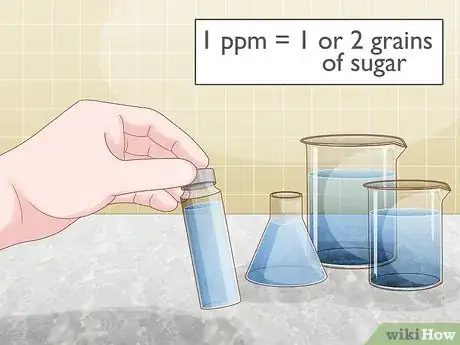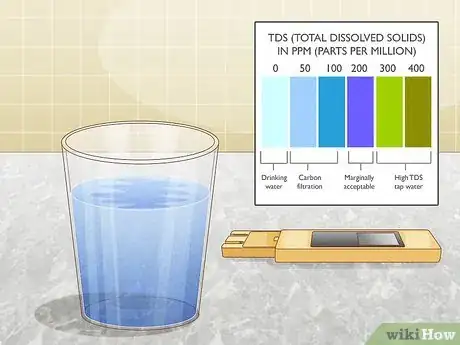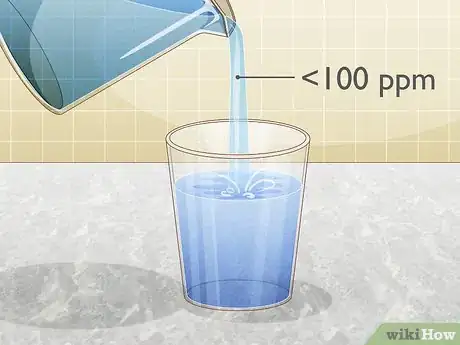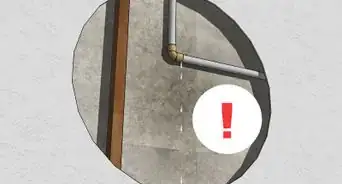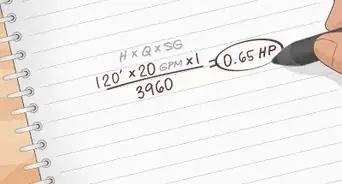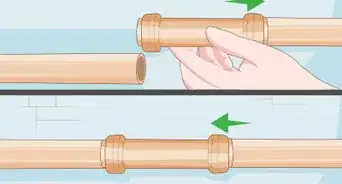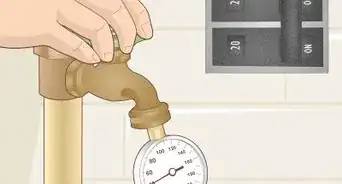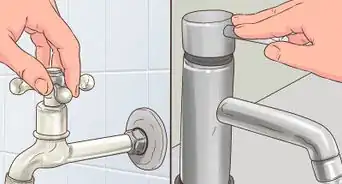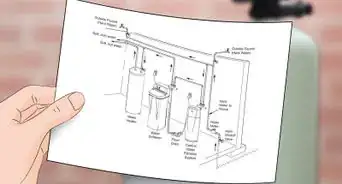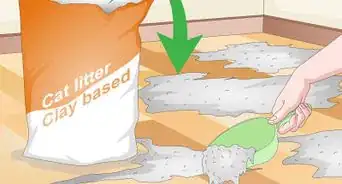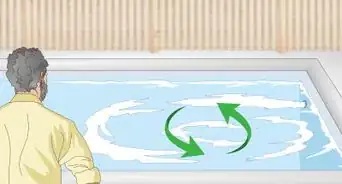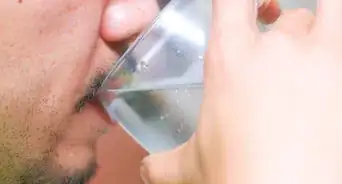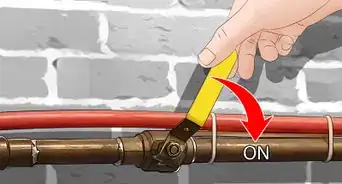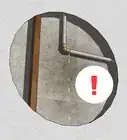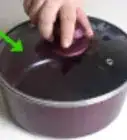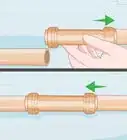This article was co-authored by wikiHow Staff. Our trained team of editors and researchers validate articles for accuracy and comprehensiveness. wikiHow's Content Management Team carefully monitors the work from our editorial staff to ensure that each article is backed by trusted research and meets our high quality standards.
This article has been viewed 22,512 times.
Learn more...
If your water is odorless and clear, how in the world can you tell what’s in it? The answer is you measure really, really small. Parts per million (ppm) measures tiny amounts of substances in your water. It’s actually really easy to test the ppm of water to make sure it’s safe to drink. You just need a water quality tester. To help you out, we’ve answered a few of the most common questions about testing the ppm of water.
Steps
How do you measure ppm in water?
-
1Use a water quality tester to quickly test the water. A water quality tester is an electronic device that quickly tests the ppm of a sample of water. Fill a glass with water, turn on the tester, and insert it into the water. Wait a minute or so until the tester takes a reading and then check the ppm of the water sample.[3]
- You can find water quality testers at pool supply stores. You can also order them online.
-
2Use a color-wheel test for a simple chlorine test. A color-wheel test is commonly used to test pool water to check the chlorine levels. You’ll dissolve a special tablet in a sample of the water that causes it to change colors. Then, you’ll compare the color of the water to a chart to get a range of the ppm levels of chlorine in the water.[4]
- A digital colorimeter involves dissolving special tablets into a sample of water that causes the water to change colors, which you can then test with a special meter. It’s more accurate than a color-wheel test.
References
- ↑ https://www.facilities.vt.edu/content/dam/facilities_vt_edu/stormwater/mcm3_WQ_Guidelines.pdf
- ↑ https://www.safewater.org/fact-sheets-1/2017/1/23/tds-and-ph
- ↑ https://youtu.be/l-6q3y_xLXg?t=107
- ↑ https://www.cdc.gov/safewater/chlorine-residual-testing.html
- ↑ https://www.dph.illinois.gov/sites/default/files/publications/drinking-water-042716.pdf
- ↑ https://www.dph.illinois.gov/sites/default/files/publications/drinking-water-042716.pdf
